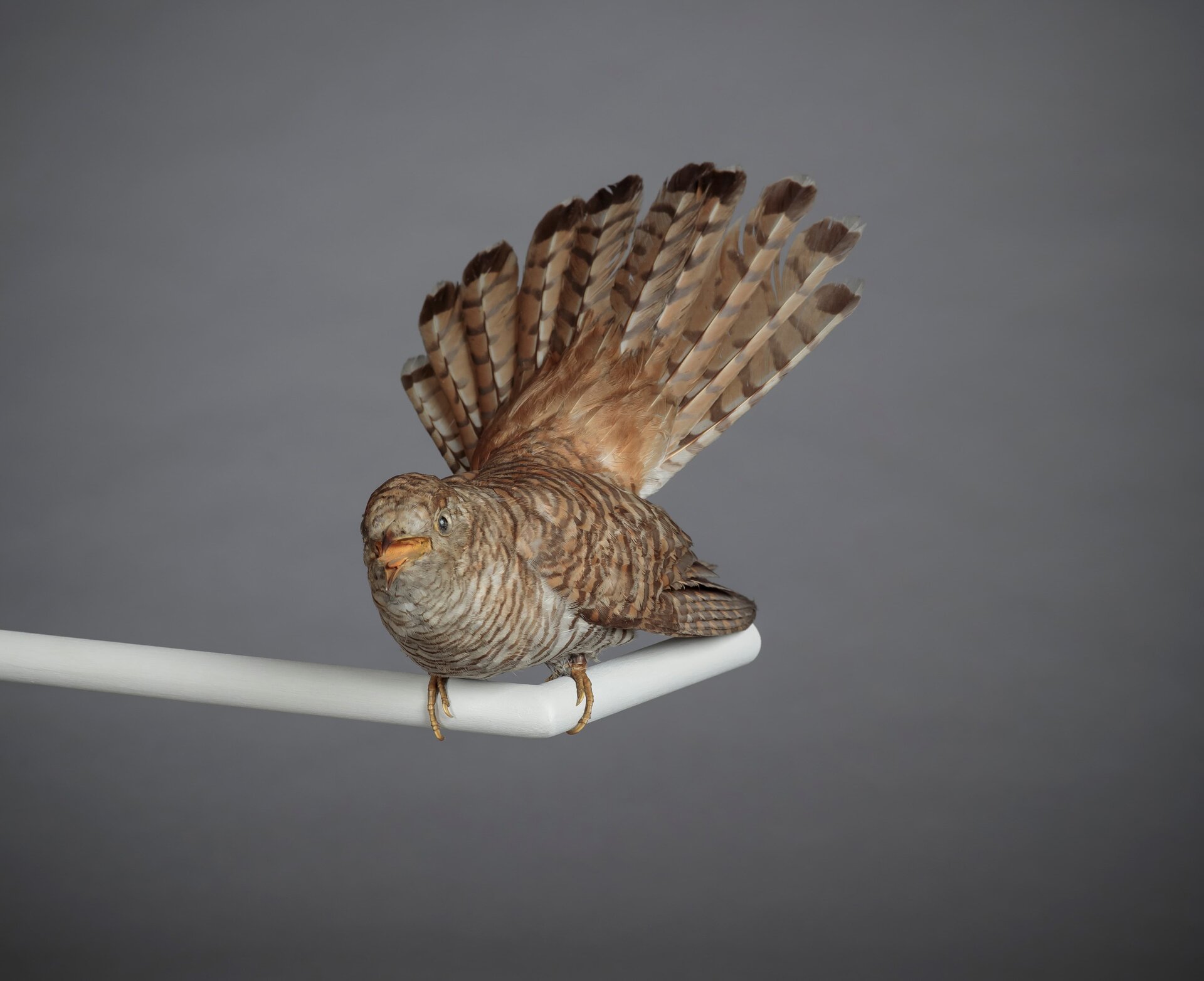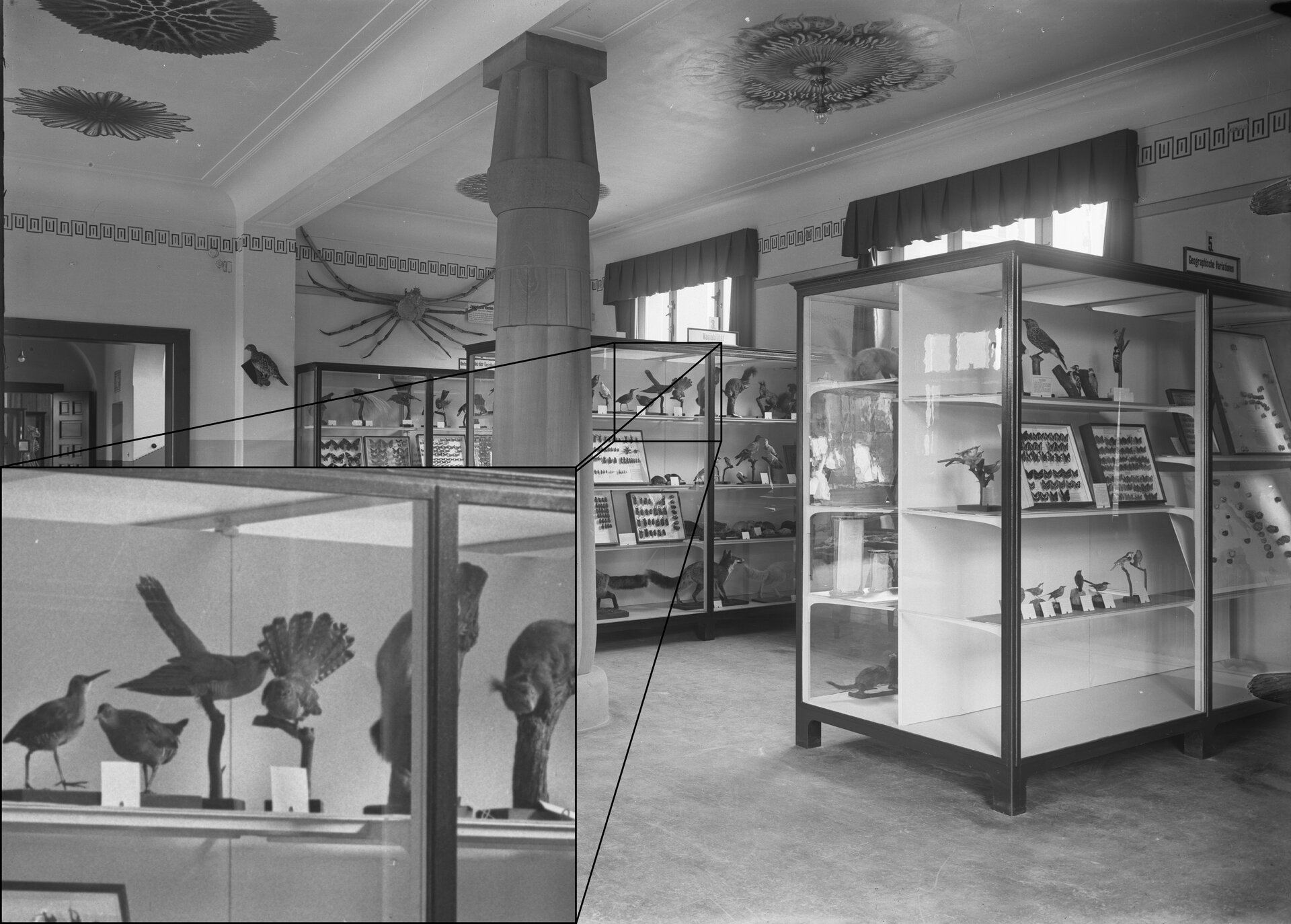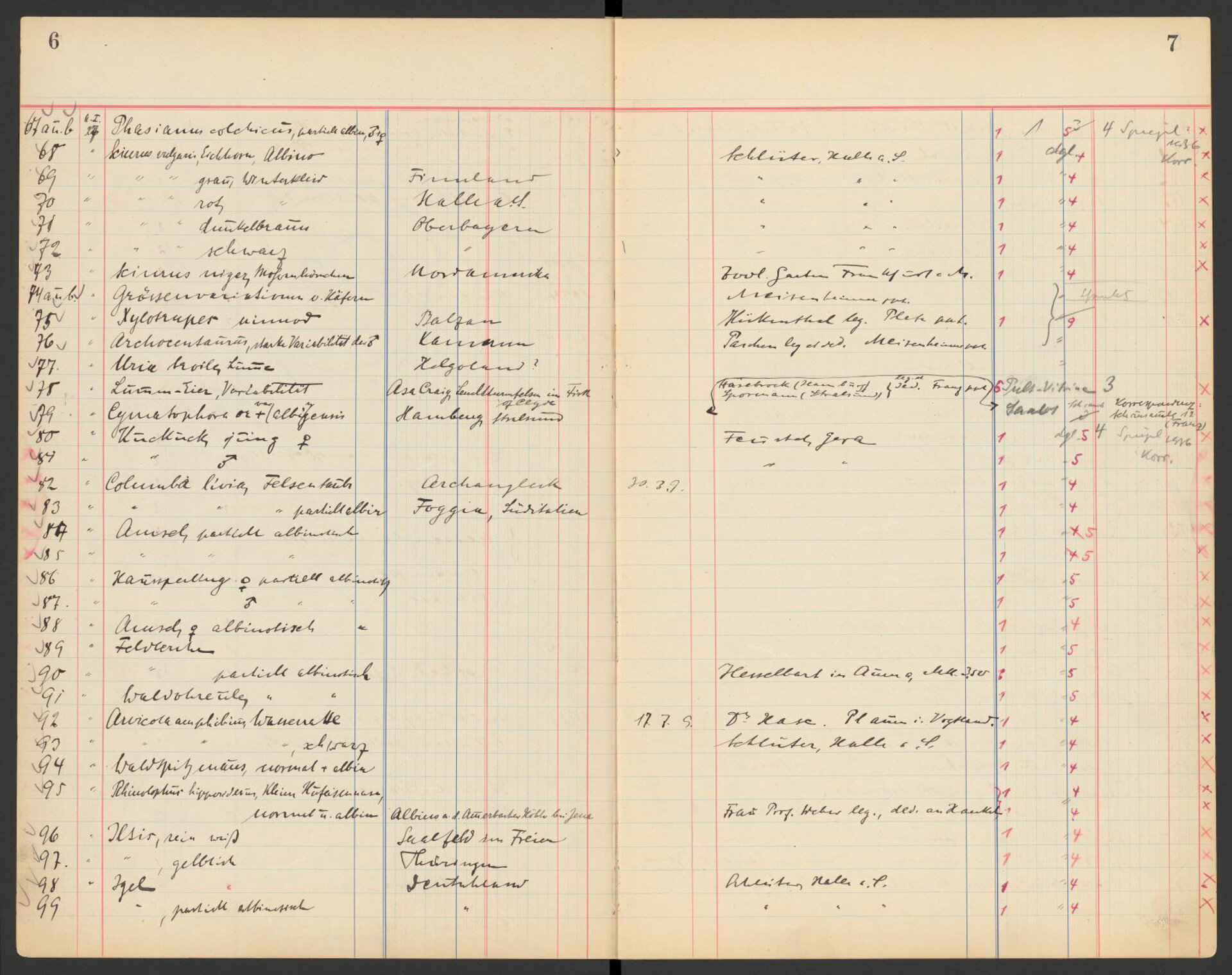Das hört` ich oft – Und falsch gehofft –
Und kommt er auch – So ist`s ein Gauch –
As J. W. v. Goethe wrote the murmur in Faust[1], the second part of the tragedy. The word "Gauch" and its use in our today way of speaking (german) is as rare[2] as seeing a living cuckoo. Gauch, as an outdated name for cuckoo, has always had the meaning "fool" – which fits better in the murmurings in Goethe's Faust.
The word cuckoo refers to the most common species of cuckoo in Central Europe - Cuculus canorus Linnæus. Because of the ceremonial opening of "Brehms Welt - Tiere und Menschen" on 29.08.2020, the cuckoo was chosen as object of the month.
The university was significantly involved in the implementation of the long-standing project through Prof. Dr. Dr. h. c. Martin Fischer, Director of the Institute of Zoology and Evolutionary Research. In addition, all 162 specimens - from wolf to goldcrests, which are kept in the Brehm House, passed through the hands of the two taxidermists of the Phyletisches Museum. The specimens were restored, habituated and mounted. Among the animals, some of which have been given to Brehm's Welt on permanent loan, are extremely valuable specimens - including the cuckoo.
The history of the animal dates back to around 1912, where a first written record is listed in the "Katalog der Schausammlung" of the Phyletisches Museum. It is listed on number 80 as "Kuckuck jung ♀ Feustel Gera" (Fig 1).
Carl Feustel (1861-1940) was a taxidermist in Gera who bequeathed his considerable collection of partly exotic birds and beetles to the “Städtische Museum Gera”[3]. Probably the cuckoo couple was bought and later exhibited in a showcase for variability in today's Evolution-Hall (Fig. 2).
Until today there are only four habitus specimens in the collection of the Phyletisches Museum. In over 100 years only two more cuckoos could be added to the collection, the numbers speak for themselves and illustrates the rarity of the bird.
"Our" cuckoo-lady with the inventory number PMJ Aves 838 has yet another special feature that only occurs among few cuckoos. Compared to the predominantly slate-grey adult animals, the one shown here, which is about 30 cm tall, is a brown colour morph (Fig 3). There are no exact numbers available on the frequency of the colour morph, but the proportion is limited to a few percent (BECKER & DANKHOFF 1973).
[1] Goethe, Johann Wolfgang von: Faust. Der Tragödie zweiter Teil. Stuttgart, 1832, S. 18. In: Deutsches Textarchiv <http://www.deutschestextarchiv.de/goethe_faust02_1832/30>, abgerufen am 16.09.2020.
[2] Volltext Sammlung des Dudenkorpus aus den letzten 25 Jahren. Das Wort ist durchschnittlich seltener als einmal in einer Million Wortformen des Dudenkorpus belegt.
[3] www.gera.de/sixcms/detail.php, abgerufen 16.09.2020.


